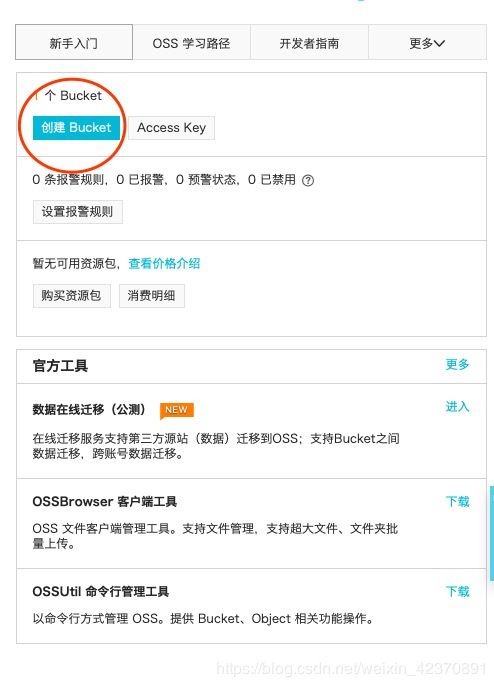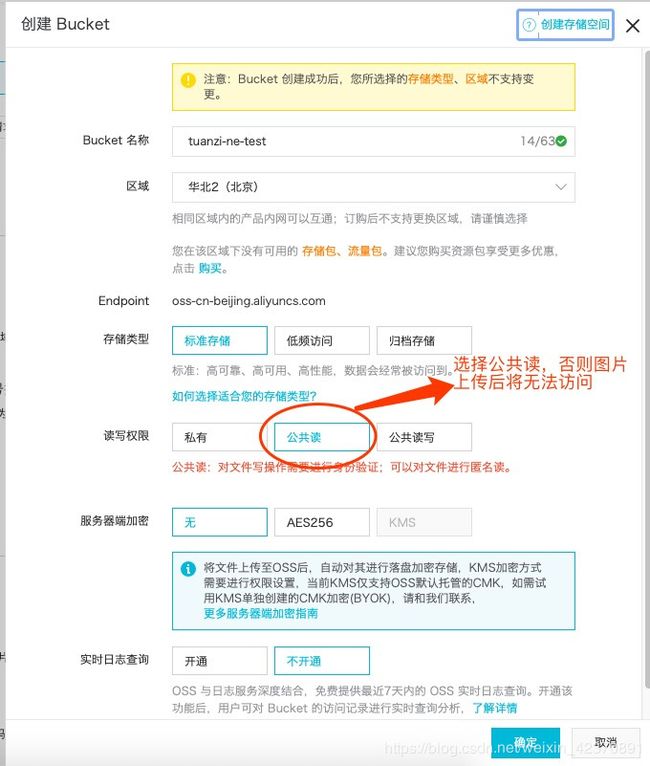springboot整合oss实现文件的上传,查看,删除,下载
springboot整合oss实现文件的上传,查看,删除,下载
1.什么是对象存储 OSS?
答:阿里云对象存储服务(Object Storage Service,简称 OSS),是阿里云提供的海量、安全、低成本、高可靠的云存储服务。其数据设计持久性不低于 99.9999999999%(12 个 9),服务设计可用性(或业务连续性)不低于 99.995%。
OSS 具有与平台无关的 RESTful API 接口,您可以在任何应用、任何时间、任何地点存储和访问任意类型的数据。
您可以使用阿里云提供的 API、SDK 接口或者 OSS 迁移工具轻松地将海量数据移入或移出阿里云 OSS。数据存储到阿里云 OSS 以后,您可以选择标准存储(Standard)作为移动应用、大型网站、图片分享或热点音视频的主要存储方式,也可以选择成本更低、存储期限更长的低频访问存储(Infrequent Access)和归档存储(Archive)作为不经常访问数据的存储方式。
有关oss更多,更详细的介绍请参考阿里云oss对象储存官方文档地址
2.登录阿里云,进入到控制台
3.创建Bucket
点击确定,这样我们就建好了。
下面我们来开始写代码?
新建一个spring boot项目
导入如下依赖
pom.xml
org.springframework.boot
spring-boot-starter-web
org.springframework.boot
spring-boot-starter-test
test
org.springframework.boot
spring-boot-devtools
true
com.aliyun.oss
aliyun-sdk-oss
2.8.3
org.projectlombok
lombok
1.18.4
provided
joda-time
joda-time
2.9.9
org.apache.commons
commons-lang3
3.8.1
application.properties配置文件
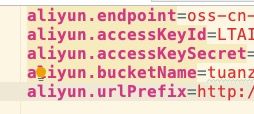
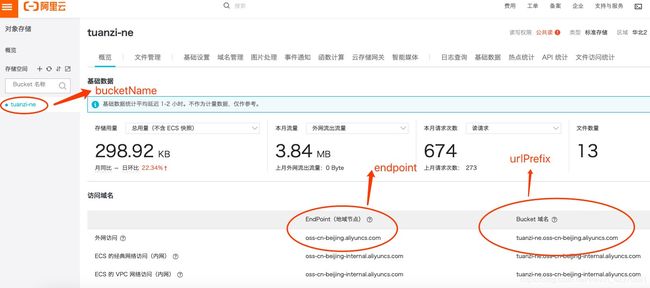
accessKeyId、accessKeySecret需要在accesskeys里面查看

编写一个配置文件AliyunConfig.class
package com.tuanzi.config;
import com.aliyun.oss.OSS;
import com.aliyun.oss.OSSClient;
import lombok.Data;
import org.springframework.boot.context.properties.ConfigurationProperties;
import org.springframework.context.annotation.Bean;
import org.springframework.context.annotation.Configuration;
import org.springframework.context.annotation.PropertySource;
/**
* @desc
*
* @author 团子
* @date 2019-07-31 11:31
*/
@Configuration
@PropertySource(value = {"classpath:application.properties"})
@ConfigurationProperties(prefix = "aliyun")
@Data
public class AliyunConfig {
private String endpoint;
private String accessKeyId;
private String accessKeySecret;
private String bucketName;
private String urlPrefix;
@Bean
public OSS oSSClient() {
return new OSSClient(endpoint, accessKeyId, accessKeySecret);
}
}
controller类
package com.tuanzi.controller;
import com.tuanzi.service.FileUploadService;
import com.tuanzi.vo.FileUploadResult;
import com.aliyun.oss.model.OSSObjectSummary;
import org.springframework.beans.factory.annotation.Autowired;
import org.springframework.stereotype.Controller;
import org.springframework.web.bind.annotation.RequestMapping;
import org.springframework.web.bind.annotation.RequestParam;
import org.springframework.web.bind.annotation.ResponseBody;
import org.springframework.web.multipart.MultipartFile;
import javax.servlet.http.HttpServletResponse;
import java.io.IOException;
import java.util.List;
/**
* @author 团子
* @desc
* @date 2019-07-31 11:31
*/
@Controller
public class FileUploadController {
@Autowired
private FileUploadService fileUploadService;
/**
* @author 团子
* @desc 文件上传到oss
* @return FileUploadResult
* @Param uploadFile
*/
@RequestMapping("file/upload")
@ResponseBody
public FileUploadResult upload(@RequestParam("file") MultipartFile uploadFile)
throws Exception {
return this.fileUploadService.upload(uploadFile);
}
/**
* @return FileUploadResult
* @desc 根据文件名删除oss上的文件
* @author 团子
* @Param objectName
*/
@RequestMapping("file/delete")
@ResponseBody
public FileUploadResult delete(@RequestParam("fileName") String objectName)
throws Exception {
return this.fileUploadService.delete(objectName);
}
/**
* @author 团子
* @desc 查询oss上的所有文件
* @return List
* @Param
*/
@RequestMapping("file/list")
@ResponseBody
public List list()
throws Exception {
return this.fileUploadService.list();
}
/**
* @author 团子
* @desc 根据文件名下载oss上的文件
* @return
* @Param objectName
*/
@RequestMapping("file/download")
@ResponseBody
public void download(@RequestParam("fileName") String objectName, HttpServletResponse response) throws IOException {
//通知浏览器以附件形式下载
response.setHeader("Content-Disposition",
"attachment;filename=" + new String(objectName.getBytes(), "ISO-8859-1"));
this.fileUploadService.exportOssFile(response.getOutputStream(),objectName);
}
}
service
package com.tuanzi.service;
import com.tuanzi.config.AliyunConfig;
import com.tuanzi.vo.FileUploadResult;
import com.aliyun.oss.OSS;
import com.aliyun.oss.model.*;
import org.apache.commons.lang3.RandomUtils;
import org.apache.commons.lang3.StringUtils;
import org.joda.time.DateTime;
import org.springframework.beans.factory.annotation.Autowired;
import org.springframework.stereotype.Service;
import org.springframework.web.multipart.MultipartFile;
import java.io.*;
import java.util.List;
/**
* @author 团子
* @desc
* @date 2019-07-31 11:31
*/
@Service
public class FileUploadService {
// 允许上传的格式
private static final String[] IMAGE_TYPE = new String[]{".bmp", ".jpg",
".jpeg", ".gif", ".png"};
@Autowired
private OSS ossClient;
@Autowired
private AliyunConfig aliyunConfig;
/**
* @author 团子
* @desc 文件上传
* @date 2019-07-31 11:31
*/
public FileUploadResult upload(MultipartFile uploadFile) {
// 校验图片格式
boolean isLegal = false;
for (String type : IMAGE_TYPE) {
if (StringUtils.endsWithIgnoreCase(uploadFile.getOriginalFilename(),
type)) {
isLegal = true;
break;
}
}
//封装Result对象,并且将文件的byte数组放置到result对象中
FileUploadResult fileUploadResult = new FileUploadResult();
if (!isLegal) {
fileUploadResult.setStatus("error");
return fileUploadResult;
}
//文件新路径
String fileName = uploadFile.getOriginalFilename();
String filePath = getFilePath(fileName);
// 上传到阿里云
try {
ossClient.putObject(aliyunConfig.getBucketName(), filePath, new
ByteArrayInputStream(uploadFile.getBytes()));
} catch (Exception e) {
e.printStackTrace();
//上传失败
fileUploadResult.setStatus("error");
return fileUploadResult;
}
fileUploadResult.setStatus("done");
fileUploadResult.setResponse("success");
fileUploadResult.setName(this.aliyunConfig.getUrlPrefix() + filePath);
fileUploadResult.setUid(String.valueOf(System.currentTimeMillis()));
return fileUploadResult;
}
/**
* @author 团子
* @desc 生成路径以及文件名 例如://images/2019/08/10/15564277465972939.jpg
* @date 2019-07-31 11:31
*/
private String getFilePath(String sourceFileName) {
DateTime dateTime = new DateTime();
return "images/" + dateTime.toString("yyyy")
+ "/" + dateTime.toString("MM") + "/"
+ dateTime.toString("dd") + "/" + System.currentTimeMillis() +
RandomUtils.nextInt(100, 9999) + "." +
StringUtils.substringAfterLast(sourceFileName, ".");
}
/**
* @author 团子
* @desc 查看文件列表
* @date 2019-07-31 11:31
*/
public List list() {
// 设置最大个数。
final int maxKeys = 200;
// 列举文件。
ObjectListing objectListing = ossClient.listObjects(new ListObjectsRequest(aliyunConfig.getBucketName()).withMaxKeys(maxKeys));
List sums = objectListing.getObjectSummaries();
return sums;
}
/**
* @author 团子
* @desc 删除文件
* @date 2019-07-31 11:31
*/
public FileUploadResult delete(String objectName) {
// 根据BucketName,objectName删除文件
ossClient.deleteObject(aliyunConfig.getBucketName(), objectName);
FileUploadResult fileUploadResult = new FileUploadResult();
fileUploadResult.setName(objectName);
fileUploadResult.setStatus("removed");
fileUploadResult.setResponse("success");
return fileUploadResult;
}
/**
* @author 团子
* @desc 下载文件
* @date 2019-07-31 11:31
*/
public void exportOssFile(OutputStream os, String objectName) throws IOException {
// ossObject包含文件所在的存储空间名称、文件名称、文件元信息以及一个输入流。
OSSObject ossObject = ossClient.getObject(aliyunConfig.getBucketName(), objectName);
// 读取文件内容。
BufferedInputStream in = new BufferedInputStream(ossObject.getObjectContent());
BufferedOutputStream out = new BufferedOutputStream(os);
byte[] buffer = new byte[1024];
int lenght = 0;
while ((lenght = in.read(buffer)) != -1) {
out.write(buffer, 0, lenght);
}
if (out != null) {
out.flush();
out.close();
}
if (in != null) {
in.close();
}
}
}
返回值类
package com.tuanzi.vo;
import lombok.Data;
/**
* @author 团子
* @desc 返回值
* @date 2019-07-31 11:31
*/
@Data
public class FileUploadResult {
// 文件唯一标识
private String uid;
// 文件名
private String name;
// 状态有:uploading done error removed
private String status;
// 服务端响应内容,如:'{"status": "success"}'
private String response;
}
这样就完成了
我们来运行一下项目
看看效果:访问http://localhost:8080/upload.html
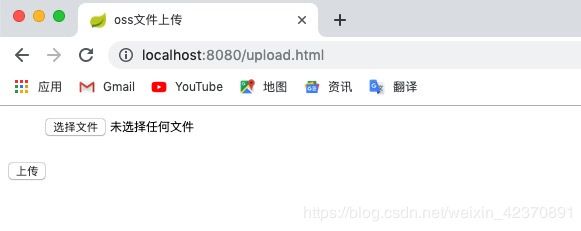
我们来上传一个不符合格式的图片,会有提示信息

来上传一个符合的

上传成功后会直接显示出来。我们来看看oss里面是否有我们上传的图片

发现也有
接下来我们来测试一下查询,下载,和删除
访问:http://localhost:8080/manager.html

会看到我们上传的图片
这里简单的写了个例子
下载图片

删除图片

来看看oss里面

也已经删除了!!!
